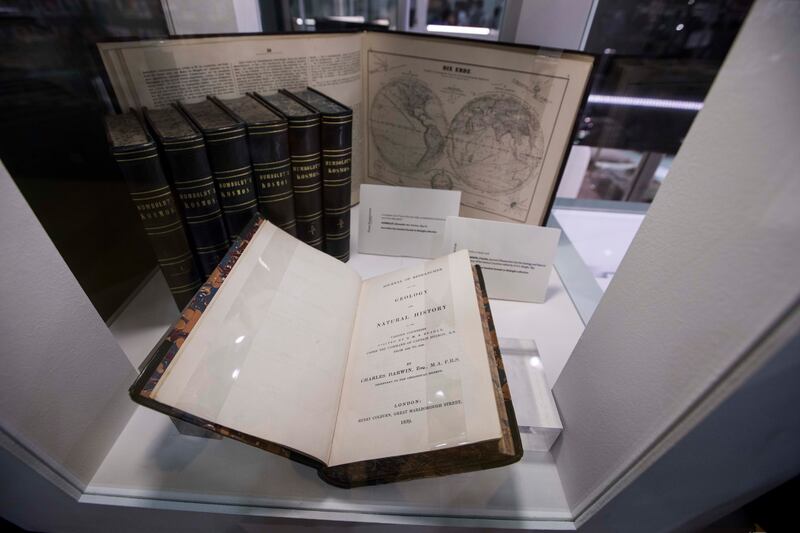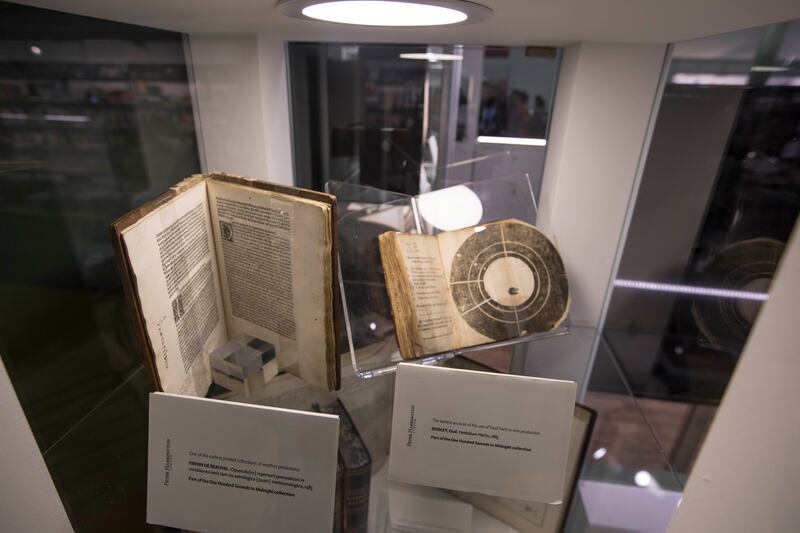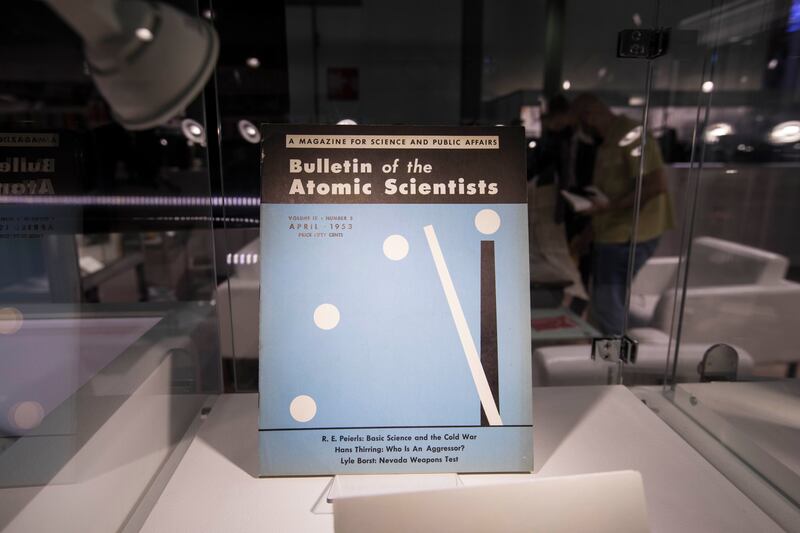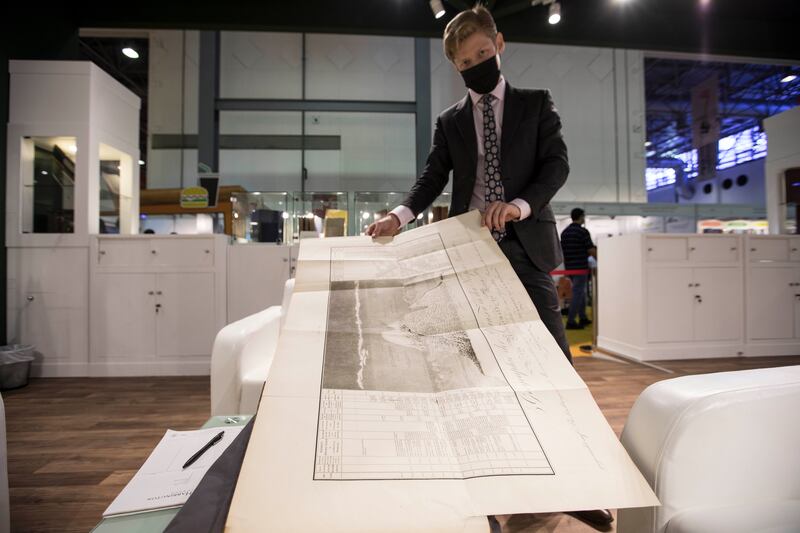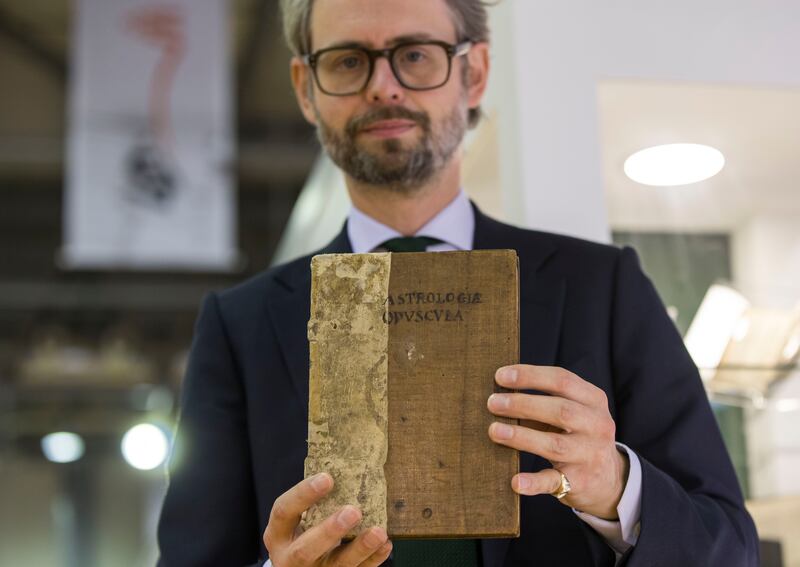Climate change may feel like a recent revelation, especially since it only became a topic of public conversation in the past few decades, but our understanding of environmental challenges actually goes back centuries.
Now, a £1.65 million ($2.21m) collection of rare printed works – part of which is on display at the Sharjah International Book Fair – shows how far back our planetary concerns go.
The collection by Peter Harrington, Europe’s largest rare books dealer, is comprised of 840 works spanning five centuries of scientific, artistic and literary investigation. It was presented on the eve of the 2021 United Nations Climate Change Conference as a collection tracing "the long journey that has brought us to our current, pivotal moment".
Titled One Hundred Seconds to Midnight, the collection is named in reference to the Doomsday Clock, a symbol conceived in 1947 to represent the encroaching man-made global catastrophe. The clock’s most recent update was in January 2021.
“It is now closer to midnight than it has ever been,” reads the One Hundred Seconds to Midnight booklet.
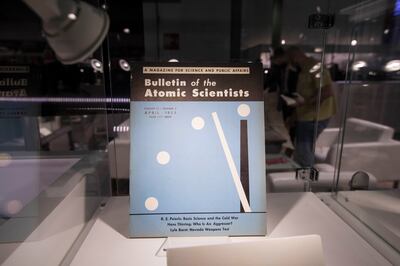
Early issues of the Bulletin of the Atomic Scientists, whose members formulated the Doomsday Clock, are among the works in the collection. The magazine covers vary in their pastel-like colours but all feature the clock with the cataclysmic alignment of the minute and hour hands a few ticks away.
The oldest work in the collection is Aristotle’s Meteorologica, written around 350 BCE. The text represents a crucial step in the advancement of meteorology. It was first printed during the Renaissance era and, after it was introduced to the public, it helped usher a new age of climate studies. The displayed work is an Italian first edition, published in 1554.
Aristotle’s treatise was not the first meteorological work to go to press, however. Published in 1485, In Mutationes Aeris by French astrologer Firmin de Beauval is considered one of the earliest printed collections of weather prediction and is also part of One Hundred Seconds to Midnight.
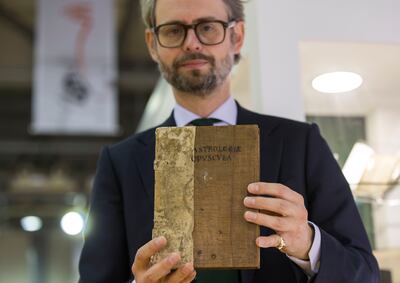
De Beauval combined popular knowledge with observations made by his classical and Arab predecessors. “The book is fascinating because the author used both science and folklore to explain local and global climate changes,” Ben Houston, a sales director at Peter Harrington, tells The National.
The Bulletin of the Atomic Scientists and In Mutationes Aeris are two of 10 titles from the collection that Peter Harrington has brought to the UAE to display at the Sharjah International Book Fair.
Another title being exhibited is Kosmos, by Prussian polymath Alexander von Humboldt. He was the first to propose that the planetary ecosystem is a connected whole. Humboldt's writing was highly influential, and was spotted on the shelves and desks of artists, poets and politicians. American transcendentalists, particularly, revered his work, including Walt Whitman and Ralph Waldo Emerson.
“Whitman had Humboldt’s Kosmos on his desk as he was working on Leaves of Grass,” Houston says. A first edition of Whitman’s highly influential poetry collection is also included in the collection.
“We’d have loved to bring the whole collection,” Houston says. “But with 840 works, it would have been challenging.”
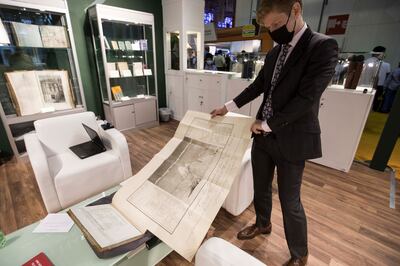
The works, he says, are being sold as a collection and will not be separated. Together, the titles from disparate branches of knowledge underscore how interwoven and deep-rooted our understanding of climate change and environmentalism is. To split them apart would undermine the collection’s message.
“I think we’ve reached a point now where politics, science, social acceptance, literature and art have come to a general agreement of the situation we are facing,” Houston says. “What’s fascinating is seeing the centuries build up to this point.”
A large part of the scientific titles in One Hundred Seconds to Midnight stem from the private collection of American David L Wenner, which was acquired by Peter Harrington.
Most of the materials in Wenner’s collection range from the early 19th century to the early 20th century, when the first seminal works on the greenhouse effect and glaciation began to appear, with the greenhouse metaphor having been coined by Swedish academic Nils Ekholm in 1901.
“[Wenner] is interesting because he was not just collecting one idea. He also collected refutations of that idea as well as critical analyses. So you get the paper, but you get all the supplementary information, which gives a really broad overview of that theory as opposed to proposing one narrative.”

Emma Walshe, a cataloguer and specialist at Peter Harrington, then decided to expand the core collection to include works of other fields including literature and art. It took three years to build the collection as it exists today.
“To report the history of something like climate change, you can’t just look at the science,” Houston says.
“It really is such an important, such a vital idea that it spreads outwards from the very meticulous scientific detail into politics, activism, literature and art. And the collection really shows that. We have a Banksy poster, which he did for Greenpeace, in the collection, and Whitman’s Leaves of Grass, which he wrote with Humboldt’s work on his desk. So the science had a profound effect on culture and literature, and it’s important to show that to the general public.”
The Peter Harrington stand at the book fair, which is taking place until Sunday, is also displaying 100 rare books, maps, manuscripts and photographs that were specifically curated for collectors from the Gulf.
The selection includes several early foundational texts on subjects as varied as agriculture and horse breeding in the Arab world, as well as lavishly illustrated copies of staple literary works, including One Thousand and One Nights and the Rubaiyat of Omar Khayyam.
A selection of rare regional maps, monographs, sketches and written journals provide a glimpse of life in the Gulf and Levant in the early to mid 20th century, documenting how the Arab nations interacted with the rest of the world.
The curated selection also includes rare and highly sought-after titles from the Western canon, including one of two pre-publication sets of sheets of JRR Tolkien’s The Hobbit.
